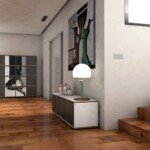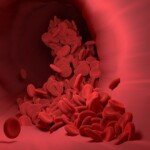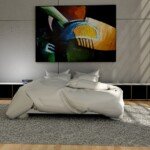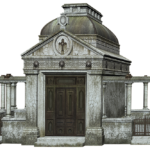Understanding the cost structure of water jet CNC cutting: a comprehensive guide
Water Jet CNC cutting has revolutionized modern manufacturing, which is able to cut any material (metal, stone, composite or glass) accurately without generating heat. As a non-thermal process, it eliminates heat distortion, hardening or toxic smoke, making it ideal for the aerospace, automotive and medical industries. However, investing in water jet services requires a clear understanding of its cost drivers. At Greatlight, we use our expertise in advanced five-axis CNC machining to unravel the mystery of water flow economics, helping you optimize your budget while ensuring quality is not compromised.
Key factors affecting the cost of reducing water prices
-
Material Specifications
- Type and thickness: Harder materials (e.g., titanium, tool steel) require higher pressure and abrasive use, increasing costs. Thicker materials (over 2 inches) require slower cutting speeds and extended machine time.
- Market price: Exotic alloys or composite materials incur higher raw material costs.
-
Machine operating parameters
- Cutting speed: Complex designs or tight tolerances reduce speed and increase labor and energy costs.
- Abrasive consumption: Garnet abrasives account for 50-75% of operating costs. Thicker cutouts consume exponentially.
- Electricity and water use: High pressure pumps (up to 60,000 psi) drive large amounts of power consumption. Water filtration/recycling adds overhead.
-
Part complexity and volume
- Complex geometry increases programming time and may require special nozzles.
- Due to setup costs, low-capacity prototypes cost more per unit, while bulk orders reduce spending per part through economies of scale.
-
Labor and indirect expenses
- Skilled operator wages, machine maintenance and facility costs contribute 20-30%.
- Secondary processes (e.g., glitches, completion) incur additional costs.
- Tools and settings
- Custom fixtures or CAD/CAM programming for unique designs increase initial costs.

5 practical strategies to reduce costs
-
Optimize nested layout
Effectively group parts on the raw material table to minimize waste. Greglight’s proprietary nesting software ensures 95%+ material utilization.
-
Balance tolerance requirements
Tolerances are specified only in critical places. ±0.005" Precision machining time and ±0.03".
-
Production using batch processing
Merge Orders: Each unit cost of producing 50 units can be reduced by up to 40% compared to one-time jobs.
-
Material selection guidance
We recommend cost-effective alternatives for non-critical applications (e.g., aluminum vs. titanium).
- Early design collaboration
Attract manufacturers during the prototyping process. Our engineers optimize the design of water jet efficiency – reducing cutting, labeling and support.
Why Greatlight performs well in Water Jet CNC cutting
At Greatlight, we combine our five-axis CNC expertise with water flow accuracy to deliver unparalleled value:
- Advanced technology: Computer-controlled robotics can ensure microscopic accuracy, even for curves or composite angles.
- End-to-end solution: Pair water jets with our milling, welding or surface finishes to simplify production.
- Material versatility: From copper and ceramics to layered composites – the challenge is not too complicated.
- Quick turnaround: Prototypes are within 72 hours; batches are in large batches within 7-10 days.
- Transparent pricing: Item-by-item quote details material, manual and finishing – no hidden fees.
in conclusion
Water jet processing is a cost-effective solution for thermally sensitive projects, but expenditure depends on strategic planning. By understanding material needs, design tradeoffs, and quantity advantages, you can control your budget. Greglight bridges this knowledge gap with technical guidance, cutting-edge equipment and competitive pricing. Whether it’s addressing medical device components or building metals, we transform the concept into a perfect product, carefully tested and delivered quickly.
Work with Greatlight today for accurate water jets: Where expertise reaches efficiency.
FAQ (FAQ)
Q1: What is the price of water spray?
A: Cost is calculated per linear foot or hour, material, thickness, complexity and finish considerations. Estimated machine time is $3-$15 per minute, plus abrasives and labor.
Q2: Can water jets cut hardened steel?
Answer: Absolute. The cured steel of water jets is up to 12" Thick, using abrasive garnet erodes the material without changing its temper.
Question 3: Will Greatlight offer discounts for bulk orders?
A: Yes. With optimized setup and material efficiency, orders of over 100 units are typically reduced by 25-50%.
Q4: Can the setup fee be agreed upon?
A: We exempt the setup fees when repeated orders or designs are consistent with existing tools. For new projects, a single setup fee applies regardless of batch size.
Q5: How accurate is the cutting of the cutter?
Answer: Tolerance dropped to ±0.003"Our CNC-guided jet maintains accuracy between metal and composite materials.
Question 6: Can you assist with cutting and finishing?
A: Yes. As a one-stop service, Greatlight offers grinding, anodizing, powder coatings and components, and offers ready-made parts.
Q7: What materials cannot be cut with a water jet?
A: Tempered glass and diamonds (due to brittleness) are problematic. Most metals, rubber, foam and stone are ideal candidates.
Question 8: How does abrasive affect cutting speed?
A: Fineering abrasives (e.g., 80-inch garnet) can make cutting faster, but cost more. We optimize gravel selection based on your material.
Q9: Is cutting jet environmentally friendly?
A: Yes. Our closed-loop system recycles 98% of water, and garnet is non-toxic. No dangerous smoke or waste is generated.

















